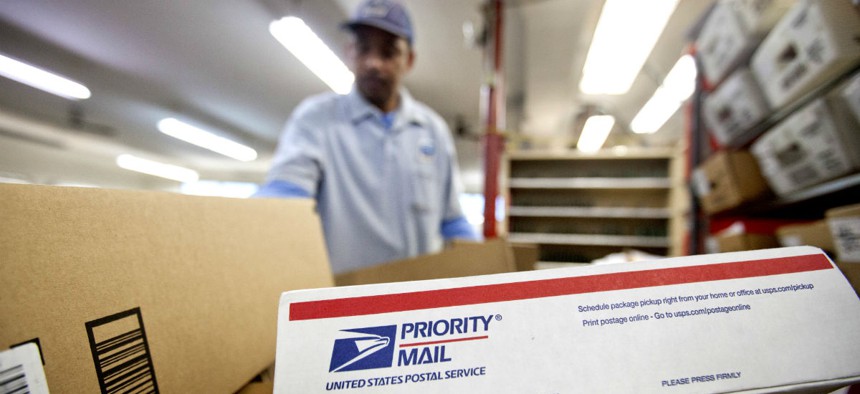
David Goldman/AP file photo
USPS Loses $1.3B in Second Quarter, More Than Doubling Its Losses From a Year Ago
The mailing agency's "controllable" business has gone from a nearly $600M profit to a nearly $700M loss in just two years.
The U.S. Postal Service on Friday announced a net loss of $1.3 billion in the second quarter of fiscal 2018, more than doubling the negative margin it posted in the same period one year ago.
Even when examining just the controllable parts of USPS’ business, which exclude certain non-operational expenses such as inflationary changes and congressional mandates to prefund future retirees’ health benefits, the agency saw a loss of $656 million from January through March. In the same months of fiscal 2017, the Postal Service actually produced a controllable profit of $12 million. In the second quarter of fiscal 2016, when USPS was reaping the benefits of a temporary, emergency price increase, the agency posted a controllable profit of $576 million.
Revenue in the quarter actually grew by 1.4 percent to $17.5 billion. That was driven largely by continued growth in the shipping and package business of 9.5 percent, bringing its revenue to $445 million. Volume from regular mail, the Postal Service’s primary source of revenue and its most profitable offering, continued its long-term decline, dropping by 2.1 percent since the second quarter of fiscal 2017.
USPS’ losses occurred in part because packages are much more expensive to deliver than regular mail. Compensation costs increased by $364 million in large part due to the labor-intensive nature of the shipping and packages business. The controllable portion of retiree health benefits and transportation costs also saw a significant uptick.
The Postal Service also sustained dips in revenue from marketing mail and periodicals during the quarter.
“Despite growth in our package business, our financial results reflect systemic trends in the marketplace and the effects of an inflexible, legislatively mandated business model that limits our ability to generate sufficient revenue and imposes costs upon us that we cannot afford,” Postmaster General Megan Brennan said Friday. “With continued aggressive management and greater legal authority to respond to changes in our marketplace and to control our costs, the Postal Service can return to financial sustainability.”
Bipartisan coalitions of lawmakers have introduced postal reform legislation along the lines of what USPS management has called for in both the House and Senate, but the measures have yet to receive a vote on the floor of either chamber. President Trump has also created a task force to deliver recommendations to improve the agency’s financial footing.
Fredric Rolando, president of the National Association of Letter Carriers, said enabling the Postal Service to restore the prices it set during its emergency increase and fixing the retiree health care prefunding mandate would go a long way toward restoring financial sustainability at the agency.
Addressing those two issues, Rolando said, would allow USPS “to continue providing Americans and their businesses with the industrial world’s most-affordable delivery network.”







